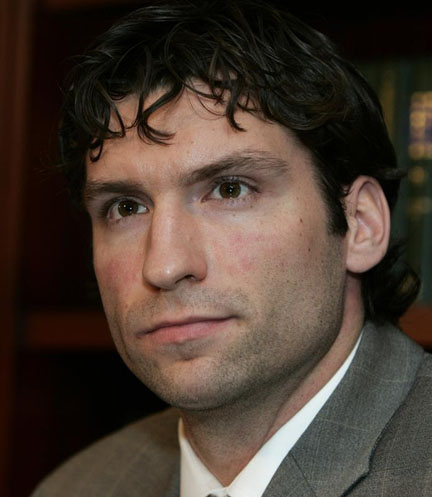Had Steve Moore’s civil lawsuit made it to the courts, its impact would have stretched far beyond money.

It would have exposed a culture of violence and retribution within the National Hockey League that reached a crescendo on that March night more than 10 years ago when Todd Bertuzzi blindsided Moore with a punch to the head and then drove his face into the ice.
Moore, who played for the Colorado Avalanche, suffered a broken back and a severe concussion and never played again. Bertuzzi, who then played for the Vancouver Canucks, received a lengthy suspension and was charged with assault causing bodily harm for which he eventually pleaded guilty. He currently plays for the Detroit Red Wings.
Moore’s $68-million lawsuit against Bertuzzi, launched in 2006, was due to start next week – exactly 126 months since he was hauled off the ice in Denver on a stretcher. That was pre-empted when Moore announced this week he had accepted an undisclosed settlement.
“If you strip it away, it’s a player suing another player for injuries, but that’s not really what this was about at all,” says lawyer and Brock University associate professor Hilary Finlay, who teaches a course in sports management. “This was about the culture of the game, who manufactures, promotes this culture, who sustains this culture, how it’s sustained.”
That was to be a critical component of Moore’s legal strategy. His lawyer, Toronto-based Tim Danson, had subpoenaed NHL commissioner Gary Bettman and intended to grill him on the witness stand over a four-day period.
It was going to be an attempt at “putting the ethical code on trial,” says Danson, who was also going to cross-examine NHL deputy commissioner Bill Daly, former director of discipline Colin Campbell, and former Canucks owner John McCaw Jr., general manager Brian Burke, assistant GM David Nonis, and head coach Marc Crawford.
Danson was going to pull back the curtain on what he calls the “unwritten rules of hockey,” being the sport’s culture of violence, retribution, and retaliation and the mentality that what goes on in the dressing room, stays in the dressing room. Here he is referring to various threats uttered by Bertuzzi and teammates preceding the infamous game in which Moore was injured.
Moore’s legal thrust was to hinge on the notion of “vicarious liability,” which states the employer (the Canucks) is liable for the acts of their employees (Bertuzzi, Crawford, Burke, etc.). Danson planned to use the Supreme Court of Canada decision in the child sexual abuse case of Bazley v. Curry, [
https://www.canlii.org/en/ca/scc/doc/1999/1999canlii692/1999canlii692.html] which which determined a non-profit foundation that provided care for emotionally-troubled children was culpable for hiring pedophile Patrick Bazley, who sexually abused a child in its care.
The nonprofit should have anticipated such a scenario would have happened given the circumstances, the court ruled.
“So when we know that a sport that traffics in violence and you push your athletes to the edges and something goes wrong, like it did in the Curry case, the SCC says you’re liable,” argues Danson. “You’re aware of the violence, you’re aware that you pushed to the outer limits, now we are imposing on you, an employer, to ensure that it doesn’t cross that line and if it does then we’re going to hold you accountable.”
The NHL likely was happy to avoid such a trial, as the same arguments could likely be used in the class-action lawsuit launched on behalf of 200 former players for damages over concussion-related injuries.
“We talk about the culture all the time in regards to fighting, but not with regard to other aspects of the sport,” says Finlay. “We’re starting to see when we look at the concussion narrative that maybe the culture needs to change.”
Because it didn’t get to court, Finlay says it remains just another player-versus-player case and she doesn’t see Moore’s settlement leading to a rush of civil claims for on-ice incidents.
Danson doesn’t agree, claiming the case has changed the way people look at these on-ice issues going forward.
“The reality is that that code of silence is not going to be able to defend itself against accountability in circumstances that we’ve just seen in Steve’s case.”

 It would have exposed a culture of violence and retribution within the National Hockey League that reached a crescendo on that March night more than 10 years ago when Todd Bertuzzi blindsided Moore with a punch to the head and then drove his face into the ice.
It would have exposed a culture of violence and retribution within the National Hockey League that reached a crescendo on that March night more than 10 years ago when Todd Bertuzzi blindsided Moore with a punch to the head and then drove his face into the ice.